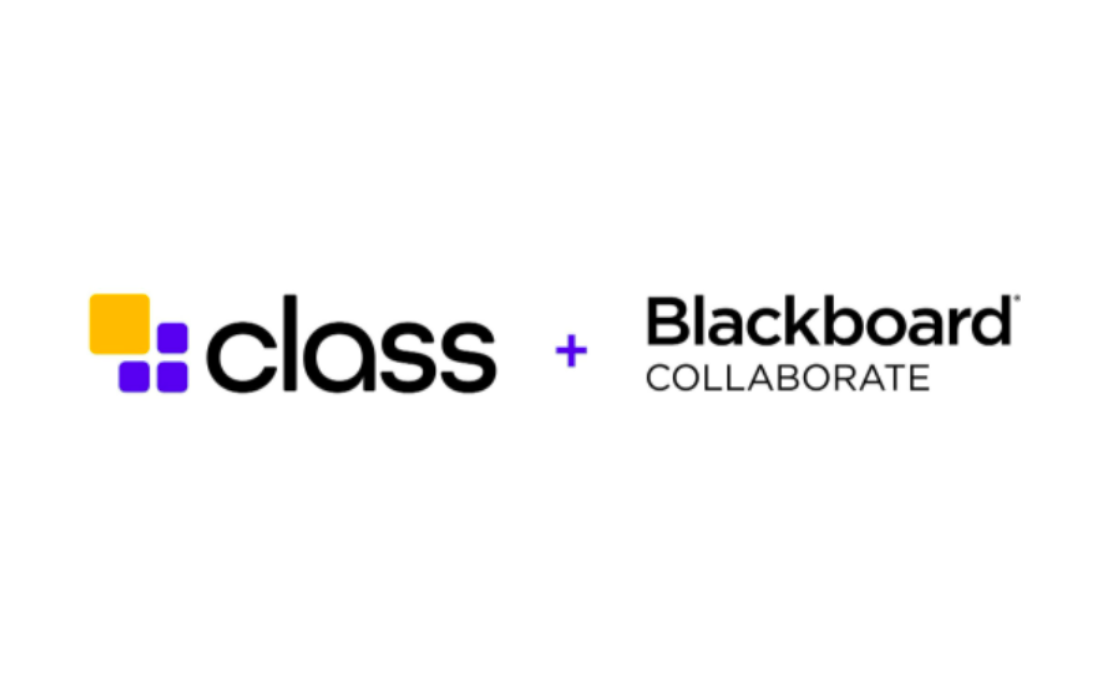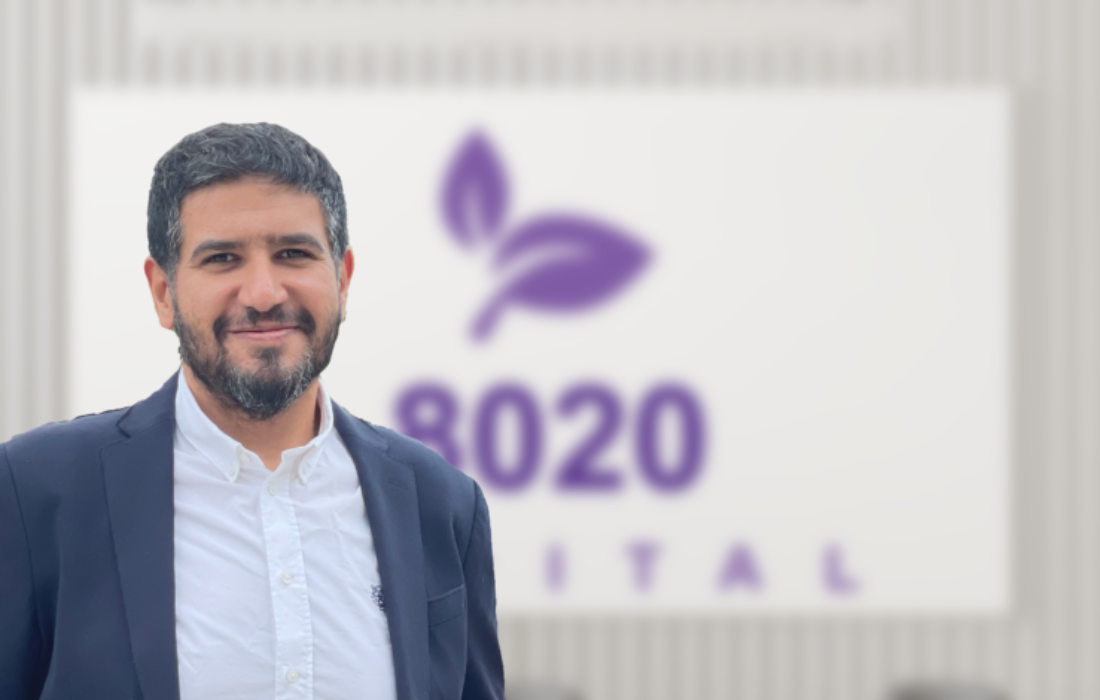E-commerce marketing in Egypt can be a rollercoaster filled with ups and downs; you could be selling hundreds of products one day and absolutely none for weeks afterwards, and these fluctuations are one of the most stressful aspects of running an e-commerce website.
As one of the best digital marketing agencies in Egypt, one thing we can tell you without a shadow of a doubt is this: you will continue to experience fluctuations in your sales volumes and revenues until the day your e-commerce brand no longer exists..
E-commerce is, by nature, a volatile business, and that’s something that not even the best branding, media buying, or content marketing will change. However, when you take a longer-term view of your brand’s growth, you’ll find that the key to sustainable growth lies in applying the correct marketing strategies for your store.
There is a huge wealth of information online on how to find the right marketing strategy for e-commerce brands across industries and verticals, but it’s important to take whatever you find online with a grain of salt, and to really think about how you want to market your brand, with its unique specifications, to truly resonate with your users and convert them into loyal customers.
The current state of e-commerce in Egypt
E-commerce has been one of the fastest growing industries in Egypt in recent years, and its growth is expected to continue trending upwards due to a variety of factors.
The biggest factor propelling e-commerce growth in Egypt is the immense support granted by the Egyptian government to startups and e-commerce businesses across the country: from tax exemptions and financial inclusion to the government’s commitment to enhancing the country’s digital infrastructure. Without this consistent support provided to the industry, it would be hard to imagine any sort of significant growth, at least in the long run.
Another factor that ties into the above is the democratization of technology and infrastructure across the country. Egypt’s population is distributed across urban and rural areas, and with more and more of these rural areas having access to the internet and a proper digital infrastructure, online shopping is being adopted rapidly by customer segments who may not have had easy access to it throughout the years.
Financial inclusion has also played a huge role in developing e-commerce in Egypt. While any e-commerce store owner in Egypt will quickly lament the fact that the market is still dominated by cash on delivery (COD) payments, we’re also seeing a growth in the segment of users paying by digital means, which are naturally much more efficient and scalable. According to this report from dLocal, COD payments represented 56% of all e-commerce transactions in Egypt in 2020, down from 64% in 2018, and this figure is expected to continue declining as more members of Egypt’s unbanked population gain access to financial services, in large part thanks to innovative payment solution providers such as Paymob and PayTabs.
All of the above has led to more and more entrepreneurs jumping into the e-commerce market, and creating e-commerce stores of all types, in an attempt to capitalize on what could be a once-in-a-lifetime opportunity in the Egyptian market.
Different types of e-commerce and the intricacies of growing each of them
There are multiple types of e-commerce websites, and each has its own intricacies and caveats to watch out for when attempting to market them to consumers. While each of these types has a variety of subtypes within them, e-commerce websites can be broadly split into these 3 types.
Regardless of the specific business model used, there are certain marketing tools and reflexes that are a must-have for any e-commerce business looking to reach new users, retain existing customers, and sustainably grow their business.
Digital channels that are crucial in e-commerce marketing
If you’re not already familiar with digital marketing, you might not know which digital channels you should use to successfully reach your customers, get them to visit your website, and eventually convert them into customers, and loyal ones if possible. However, before you look into the different digital channels at your disposal, it’s important to have an understanding of the rationale behind digital marketing so that your marketing efforts do not fall on deaf ears.
One of the most crucial concepts that e-commerce marketers must understand and get to grips with is that of the digital marketing funnel. Naming conventions differ wildly, but in layman’s terms, a digital marketing funnel is what you use to segment your users based on where they are in their buying journey with your brand.
An example that will help you understand this concept is that of a marriage proposal…
Let’s say you met someone today while you’re out running errands. They approach you and instantly ask you to marry them, claiming their undying love and affection for you. Naturally, unless you’re a new sort of hopeless romantic, you are immediately turned off and reject their proposal. At least I hope that’s what you’ll do.
However, let’s say you meet that same person today, and they ask you out for a cup of coffee: a much smaller and more reasonable commitment than that of marriage. Hesitantly, you agree and decide to meet for coffee. You meet this person and you find that the conversation is smooth and that you both have a lot in common. You go out on date after date, constantly discovering new things about, and falling madly in love with, each other. After a period of time dating, they decide to ask you to marry them.
Now, I don’t know what you’re looking for in your dating life or in marriage, but I can guarantee you that the second scenario has a far greater potential of ending in marriage. The same exact concept applies to your digital marketing efforts.
Just like asking a stranger out on a coffee date is a much more reasonable request than a marriage proposal, and requires far less trust between you and said stranger, purchasing a pair of socks is a much smaller, more reasonable commitment to someone than subscribing to a SaaS brand’s lifetime plan. This is why you need to always keep in mind the specific level of commitment that you want your users to have with your brand before you start thinking about how to build enough trust for them to actually commit to it.
With that out of the way, you need to decide on the actual tools, digital channels, and content that you will use to reach and persuade your target audience across the different stages of your brand’s funnel. The quickest way to reach more users and communicate the right message at the right time with them is through digital advertising.
Paid Ads
Digital advertising is one of the most effective tools in the modern marketer’s toolkit simply because it is the quickest way to reach new and existing users and to push them further down the funnel. However, marketers who are not aware of the intricacies involved in optimizing their digital ad campaigns may find themselves stuck in a whirlwind of rising ad costs, poor campaign results, and falling clickthrough rates.
Media buying is an exceptionally specific skill in that regardless of your business knowledge or technical expertise in other realms of digital marketing, it takes a unique mindset, lots of learning, and a unique set of tools to truly master media buying. Due to this, media buying is likely the digital marketing discipline that suffers the most from the dreaded Dunning-Kruger effect.
One of the reasons this happens is because initially, running successful campaigns for an e-commerce brand, especially with lower budgets, is relatively easy. A great example of this happens to many e-commerce marketers with Facebook Ads.
How not to scale your Facebook Ads campaigns
When you run your first ad campaigns, you’re more likely to be setting a budget that is extremely limited. It’s as if you’re telling Facebook that you want to generate as many results as possible from this limited budget.
Initially, this works great: you start racking up impressions, reach, and engagement on your ad. Then, you start seeing your first few conversions. Since your budget is small, generating even 1 or 2 conversions can bring key campaign metrics such as Return on Ad Spend (ROAS) down to where running Facebook ad campaigns seems like a very profitable, and even sustainable, way of generating more sales.
The real challenge happens when you decide that you want to grow and scale your ad campaigns…
Let’s say you’ve been spending a budget of EGP 200 per day and generating 2 conversions per day, so your cost per purchase is EGP 100. Luckily, the product you’re selling brings in a profit margin of well over EGP 100, so you’re happy spending more on your campaigns in order to continue generating conversions at the same cost.
You decide to increase your budget to EGP 1,000 per day, as you want to generate more conversions, increase your revenue, and scale your business at the same level of profitability. You would expect that this increase will lead to your website generating 10 conversions per day, maintaining that cost per purchase of EGP 100… However, after the first few days following this decision, you find that you’re generating much fewer conversions than you had predicted.
Now, instead of generating 2 conversions at EGP 100 each, your cost per conversion has skyrocketed to well over EGP 200, and you’re only generating 1 or 2 more conversions per day, leading to a downturn across all of your campaign metrics.
How you should scale your Facebook Ads campaigns
Now that you know how not to scale your Facebook Ads campaigns, we can talk about how you should scale your campaigns.
In the above example, the major mistake that happened when scaling the campaign was that it was done suddenly, causing Facebook to serve as many impressions as possible in order to spend the entire budget, without properly optimizing for best results.
The solution for this problem lies in using one of the two main methods of scaling your Facebook Ads campaigns:
- Vertical Scaling: This involves gradually increasing your campaign budget in order to maintain your campaign’s results and keep them relatively stable instead of suddenly increasing your budget. This strategy is the most commonly used by professional media buyers across Facebook Ads and other major ad platforms such as Google Ads.
- Horizontal Scaling: Instead of increasing your budget gradually on one ad, this method allows you to more quickly scale your campaigns. To scale horizontally, you’ll want to create a variety of different ads featuring different products, all with the same daily budget you had set initially. This allows you to maintain your campaigns’ efficiency better than if you suddenly increased your budget for just one ad.
It’s also important to experiment with different bidding strategies in order to scale as efficiently as possible. While the lowest cost bidding strategy is likely to be your go-to at the start of your business’ advertising efforts, it quickly becomes less effective as you increase your budget. Accordingly, you should try out different strategies such as cost cap and bid cap in order to find the winning formula for your brand’s ad campaigns.
Coupled with constant monitoring and optimization of your campaigns, you should be able to efficiently grow and scale your campaigns, and in turn, your business.
Organic Social Media
While it has lost its initial shine due to platforms such as Instagram and Facebook severely limiting brands’ organic reach, there is still a huge opportunity to grow your brand through organic social media.
The value of organic social media lies in creating engagement and meaningful conversations with your followers around your brand. Creating content that truly resonates with users, entertains them, or piques their interest, will lead to two important outcomes:
- Your brand will start to build rapport and trust with your followers. By answering their questions about your brand or products, and by creating content that they feel is relevant to their lives, you can turn casual followers into loyal paying customers.
- By increasing your engagement rates, you will start to generate more reach through your organic social media posts. By consistently creating content that users engage with and share, you can turn your social media pages into some of your brand’s strongest marketing channels, as more and more of your target audience will see your content as your engagement rate rises. For a live example of this, just check your own Instagram feed; more likely than not, you’ll find that the first posts on your feed aside from your close friends and family will be from meme pages and usually not from businesses you follow, and this is mainly due to meme pages’ exorbitantly high engagement rates.
While organic social media is a powerful marketing tool, it is usually not sustainable in the long run except in a select few cases. You probably won’t be able to completely depend on organic posting when it comes to growing your e-commerce business, but it can be extremely effective in boosting your results when used right.
Search Engine Optimization
Ask any digital marketer what they think is the single most important investment you can make for your e-commerce business’ growth, and you’re likely to hear SEO come up quite often. SEO is among the most powerful tools you can use to market your e-commerce website, but one of the most time-consuming.
Properly optimizing your website for search engines, mainly Google, takes a lot of effort. Google’s ranking factors include internal and external link building, keyword placement, website speed, content readability and depth, social signals, domain authority, and hundreds of other factors. Optimizing each of these, building new external links from relevant websites, and creating content that your audience finds helpful and valuable is a long-term affair. This is why most professionals will tell you that SEO is a long-term game, and not a quick win for your brand.
While other search engines could potentially lead traffic to your website that results in more purchases, it makes the most sense to optimize for Google as it encompasses 91.56% of searches worldwide. In Egypt, this is even more logical, as Google accounts for 96.37% of all searches in the country.
Because SEO is an extremely vast ocean that is constantly changing due to algorithm updates and new strategies, we would recommend hiring an SEO specialist, be that an employee, agency, or freelancer, for almost any e-commerce brand looking to build sustainable growth without breaking the bank on paid media.
At ripplemark, we’ve helped dozens of clients improve their websites’ search rankings and authority through in-depth keyword research, technical analysis and competitive analysis along with content creation that combines readability, engagement, and technical SEO requirements. If you’d like to learn more about how we could help your brand from an SEO perspective, check out our SEO service.
Email Marketing
Email marketing, contrary to popular belief, is nowhere near dead. With an average ROI of $36 for every $1 spent, email is one of the most important channels in your e-commerce marketing strategy.
There are numerous benefits of creating a solid email marketing strategy for your business, but the main value of email marketing for e-commerce brands lies within these main ones:
The biggest mistake we see a lot of e-commerce brands in Egypt making when it comes to email marketing is the overarching objective of their email marketing strategy.
If you’re looking to generate awareness or exponentially grow your sales, other channels such as paid ads and SEO are far more effective in that aspect. However, if you’re looking to build trust with your customers, retain them, and create a base of loyal customers who purchase your products on a regular basis, you would be strapped to find a better channel than email.
Whenever you’re creating and sending out marketing emails, you need to put yourself in your customers’ shoes.
For example, if a brand you subscribed to is spamming your inbox with marketing emails asking you to try out their latest products, it’s inevitable that your patience will wear thin, and that you will eventually either stop opening their emails, unsubscribing from their list, or even reporting their emails as spam.
This is really why you should use a fair degree of empathy when it comes to email marketing (and I daresay marketing in general). If you don’t think someone within your target segment would find your email interesting, valuable, or useful, why are you even sending it in the first place?
Aside from the traditional advice of creating interesting subject lines, valuable content, and sending to the right people at the right time, another concept that many Egyptian startups have yet to grasp is the importance of email deliverability and list hygiene.
In a nutshell, you should never ever send to anyone who has not willingly expressed their consent to receive marketing emails from your brand. Purchasing lists from other businesses, for example, is something that we’ve seen a lot of brands in Egypt doing, but that is one of the quickest ways to destroy any and all trust between your users and your brand, as well as with your email service provider.
If your email campaigns are routinely resulting in unusually high bounce rates, unsubscribes, or spam complaints, less and less of your emails will reach your users’ inboxes, severely hampering your efforts. Instead, your emails will be delivered to users’ spam or junk folders, leaving you scrambling as to why your email marketing efforts aren’t generating any results.
However, if you do properly follow email marketing best practices from list building and hygiene to your actual email content, you’ll find that email marketing will become one of your brand’s most profitable channels, and one that helps your business grow and scale efficiently.
Offline factors that you really have to nail for your brand to succeed
Digital marketing can be a hugely important piece of the e-commerce marketing puzzle, but without the proper offline experience, all of your efforts will eventually fall through the cracks…
Let’s say you just reached and converted a new customer. They loved your ad content, your website’s content, and your brand overall, so they decided to try out one of your products. This is someone who could potentially turn out to be a loyal customer for years to come…
However, their order doesn’t arrive on time/arrives on time but is not as expected/the packaging isn’t on par/they face another of the thousands of issues customers face with e-commerce stores every single day.
Now, instead of becoming a recurring customer and maybe even a brand advocate, they will feel a sense of resentment towards your brand, and may even recommend against buying your products to their friends, families and acquaintances. According to Invesp CRO, word of mouth marketing impressions result in 5x more sales than paid media impressions, and people are 90% more likely to trust a brand that was recommended to them by a friend, so not investing enough time and attention into delivering a product that delights customers and exceeds their expectations is one of the biggest marketing mistakes any e-commerce company can make.
Especially in Egypt, with the advent of pages like ‘Don’t shop there’, word of mouth is more important than ever. One bad customer experience could potentially cost you millions of pounds worth of future revenue, so it’s extremely important for brands to truly put the customer first.
Another crucial factor for the success of your e-commerce business is your branding. There are likely dozens of brands selling similar products that are also similar to yours in terms of pricing, design, and features, but the brands that truly stand out are those that have a strong brand with a clear personality that people are able to relate to.
Branding is a far more complex affair than simply designing a logo and visual guidelines; your brand values and persona should be relevant to your target market and embedded into everything your business does. In a competitive industry such as e-commerce, where customers are spoilt for choice, the details can make all the difference. This guide is a good starting point that includes the main aspects you’ll want to keep in mind when designing your brand.
The most crucial factor for the success of your e-commerce website is… your e-commerce website!
Let’s be real. You could have a very strong brand, a great customer experience, and technical brilliance across all of the key areas of marketing an e-commerce website, but if the website itself isn’t helping you persuade your customers to make a purchase, then you’ll be missing out on massive amounts of potential revenue.
One of the most important aspects of growing an e-commerce website is conducting proper CRO (conversion rate optimization). CRO, put simply, is the process of testing small changes to variables in your website, such as layout, button colors, calls to action, and product descriptions, and monitoring the results to identify whether the changes have caused an uptick in conversion rates, AOV, and revenues.
CRO is a crucial endeavor for any e-commerce website, because there’s no point in leading thousands of visitors to your website if almost none of them ever convert into customers! It is one of the quickest ways to boost your website’s key metrics.
When conducting CRO, the first step is to look in your analytics dashboards for large gaps in your digital marketing funnel. For example, if your website is getting 10,000 monthly visitors, but only 0.5% of those are actually adding products to their cart, this is a large enough gap for you to consider experimenting with changes in your homepage layout, product imagery, or CTAs. Likewise, if you have a lot of customers adding products to their carts, but only 1% of those are completing the entire checkout process and making a purchase, you might need to give your checkout page a bit of a makeover!
Once you’ve identified where the main gaps in your funnel are, you can go on to create hypotheses on how to improve your results. These hypotheses should be ranked in order of impact and feasibility, so that you can identify the biggest quick wins to work on at first. Frameworks such as PIE and ICE can help you streamline the hypothesis prioritization process so that you can more efficiently identify the quick wins, high-impact changes, and lower priority ones.
Afterwards, you can go on to start running your tests as prioritized, documenting each experiment and the results. One of the most important and simple types of tests to run consistently on your website is A/B testing, where you change a single variable on a webpage and randomly take half of your users to the edited page, and the other half to the original, or control, page. The more A/B tests you run on your website, the more you’ll start to identify your users’ preferences and be able to optimize your website accordingly for the most efficient results.
There are also tons of factors to consider when conducting CRO, such as the layout of your homepage and collection pages, the functionality of the website, product pricing and how it’s displayed on each product page, and even playing around with factors such as bundling or additional purchase recommendations can produce surprising results!
To make CRO easier for yourself and your team, there are a myriad of online tools which can help you streamline your CRO process. The most important and useful CRO tools we use with our e-commerce clients at ripplemark are:
- HotJar: This is a behavioral analytics tool used to track users’ journeys across your website through session recordings, helping you discover the areas, pages or elements with the most interactions through heat maps. You can also use it to gather your users’ feedback through surveys.
- Google Optimize: An A/B testing tool used to serve multiple versions of web pages to specified percentages of users & gain insights about the winning variant.
- FigPii: A CRO tool used to analyze users’ data, suggest website improvements and test their impact on users’ behavior, and suggest further improvements with its machine learning algorithm.
Do you need further information or assistance with marketing your e-commerce website? We’ve got you covered!
Of course, no guide on Earth will teach you everything you need to know about marketing your e-commerce website, but I simply wanted to point you in the right direction when it comes to your e-commerce marketing strategy, so that you know the tools, channels, and caveats to watch out for when marketing for e-commerce.
If you’d like to learn more about marketing your e-commerce website, or would like to hire an agency to take care of it for you, ripplemark would be happy to help! We offer an e-commerce marketing service, where we handle your entire e-commerce marketing efforts from a digital perspective and we also provide a digital consultation service where we conduct a live audit on your website and digital assets to provide you with a clear roadmap for growing your business.
If you see something out of place or would like to contribute to this story, check out our Ethics and Policy section.










